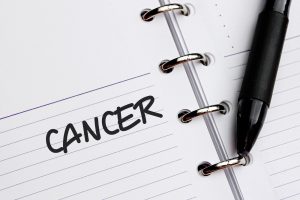Written by Joyce Smith, BS. After six months of testosterone therapy, young male cancer survivors with borderline low morning testosterone levels experienced a significant decrease in whole body-fat mass and increase in lean muscle mass.
 With the ever increasing prevalence of childhood cancers, the numbers of cancer survivors are also increasing. According to recent statistics, a half million children in the U.S. alone will have survived cancer by the end of 2020 1. Fifty percent of all male adult childhood survivors have endocrine disorders 2,3. Prevalent among them are testosterone insufficiencies 4 gonodal dysfunction 5 and fertility problems 6. Symptoms of low serum testosterone levels (<7nmol/L) include increased body fat, loss of lean muscle mass and aspects of impaired Quality of Life (QoL) such as low self-esteem, fatigue and sexual function. The absence of adequate studies on testosterone deficiencies in young male cancer survivors speaks to the need for additional research to determine whether testosterone replacement therapy may be beneficial to them.
With the ever increasing prevalence of childhood cancers, the numbers of cancer survivors are also increasing. According to recent statistics, a half million children in the U.S. alone will have survived cancer by the end of 2020 1. Fifty percent of all male adult childhood survivors have endocrine disorders 2,3. Prevalent among them are testosterone insufficiencies 4 gonodal dysfunction 5 and fertility problems 6. Symptoms of low serum testosterone levels (<7nmol/L) include increased body fat, loss of lean muscle mass and aspects of impaired Quality of Life (QoL) such as low self-esteem, fatigue and sexual function. The absence of adequate studies on testosterone deficiencies in young male cancer survivors speaks to the need for additional research to determine whether testosterone replacement therapy may be beneficial to them.
Testosterone Replacement in Young Male Cancer Survivors (TRYMS) is a prospective, multicenter, randomized, double-blind, placebo-controlled trial 7 involving 136 young male cancer survivors from the United Kingdom, aged 25–50 years, with borderline low testosterone levels. The participants were equally divided to receive either a placebo (inactive) gel or active testosterone gel, which they applied each day to their skin for 26 weeks. At baseline and at the end of 26 weeks, Walsh and colleagues measured the body composition and QoL of all participants. Primary endpoints were a change in trunk fat mass as measured using DXA and QoL questionnaire scores regarding self-esteem, fatigue, and sexual function. Secondary end points included measurements of whole body mass, lean body mass, fasting insulin, glucose ratio, fasting lipids and bone density.
At 26 weeks, testosterone treatment in the group of cancer survivors was associated with a statistically significant decrease in trunk fat mass (−0.9 kg (95% CI −1.6 to −0.3, p = 0.0073) compared to placebo. (A decrease in trunk fat mass of more than 1.5 kg occurred in 25% of the treatment group.) Also at 26 weeks, the testosterone-treated group significantly decreased their whole-body fat mass (−1.8 kg, 95% CI−2.9 to −0.7, p = 0.0016) and increased their whole-body lean muscle mass (1.5 kg, 95% CI 0.9–2.1 p < 0.001); however, based on quality-of-life questionnaires, there was no difference in quality of life between those treated with placebo or testosterone (odds ratio [OR] = 0.77, 95% CI 0.30–1.97, p = 0.5803). No changes were evident in fasting insulin, glucose ratio, fasting lipids, bone density, BMI, or waist circumference. Questions concerning sexual functioning could not be formally analyzed because more than 30% of data were missing.
While the research team does not advocate testosterone therapy for young male cancer survivors, this study does provide evidence of potential treatment benefits for those who have borderline low testosterone levels. The research team found the reduction in trunk fat mass following testosterone treatment was greatest in participants who had the most trunk fat mass at baseline and suggest that for those patients, testosterone replacement therapy may serve a beneficial role along with other interventions to improve body composition.
Source: Walsh, Jennifer S., Helen Marshall, Isabelle L. Smith, Diana M. Greenfield, Jayne Swain, Emma Best, James Ashton et al. “Testosterone replacement in young male cancer survivors: A 6-month double-blind randomized placebo-controlled trial.” PLoS medicine 16, no. 11 (2019): e1002960.
© 2019 Walsh et al. This is an open access article distributed under the terms of the Creative Commons Attribution License, which permits unrestricted use, distribution, and reproduction in any medium, provided the original author and source are credited.
Click here to read the full text study.
Posted July 20, 2020.
Joyce Smith, BS, is a degreed laboratory technologist. She received her bachelor of arts with a major in Chemistry and a minor in Biology from the University of Saskatchewan and her internship through the University of Saskatchewan College of Medicine and the Royal University Hospital in Saskatoon, Saskatchewan. She currently resides in Bloomingdale, IL.
References:
- Sklar CA, Antal Z, Chemaitilly W, et al. Hypothalamic-Pituitary and Growth Disorders in Survivors of Childhood Cancer: An Endocrine Society Clinical Practice Guideline. The Journal of clinical endocrinology and metabolism. 2018;103(8):2761-2784.
- Oeffinger KC, Mertens AC, Sklar CA, et al. Chronic health conditions in adult survivors of childhood cancer. The New England journal of medicine. 2006;355(15):1572-1582.
- Gebauer J, Higham C, Langer T, Denzer C, Brabant G. Long-Term Endocrine and Metabolic Consequences of Cancer Treatment: A Systematic Review. Endocr Rev. 2019;40(3):711-767.
- Bandak M, Jørgensen N, Juul A, et al. Testosterone deficiency in testicular cancer survivors – a systematic review and meta-analysis. Andrology. 2016;4(3):382-388.
- Brydøy M, Fosså SD, Dahl O, Bjøro T. Gonadal dysfunction and fertility problems in cancer survivors. Acta oncologica (Stockholm, Sweden). 2007;46(4):480-489.
- Lehmann V, Chemaitilly W, Lu L, et al. Gonadal Functioning and Perceptions of Infertility Risk Among Adult Survivors of Childhood Cancer: A Report From the St Jude Lifetime Cohort Study. Journal of clinical oncology : official journal of the American Society of Clinical Oncology. 2019;37(11):893-902.
- Walsh JS, Marshall H, Smith IL, et al. Testosterone replacement in young male cancer survivors: A 6-month double-blind randomised placebo-controlled trial. PLoS Med. 2019;16(11):e1002960.
